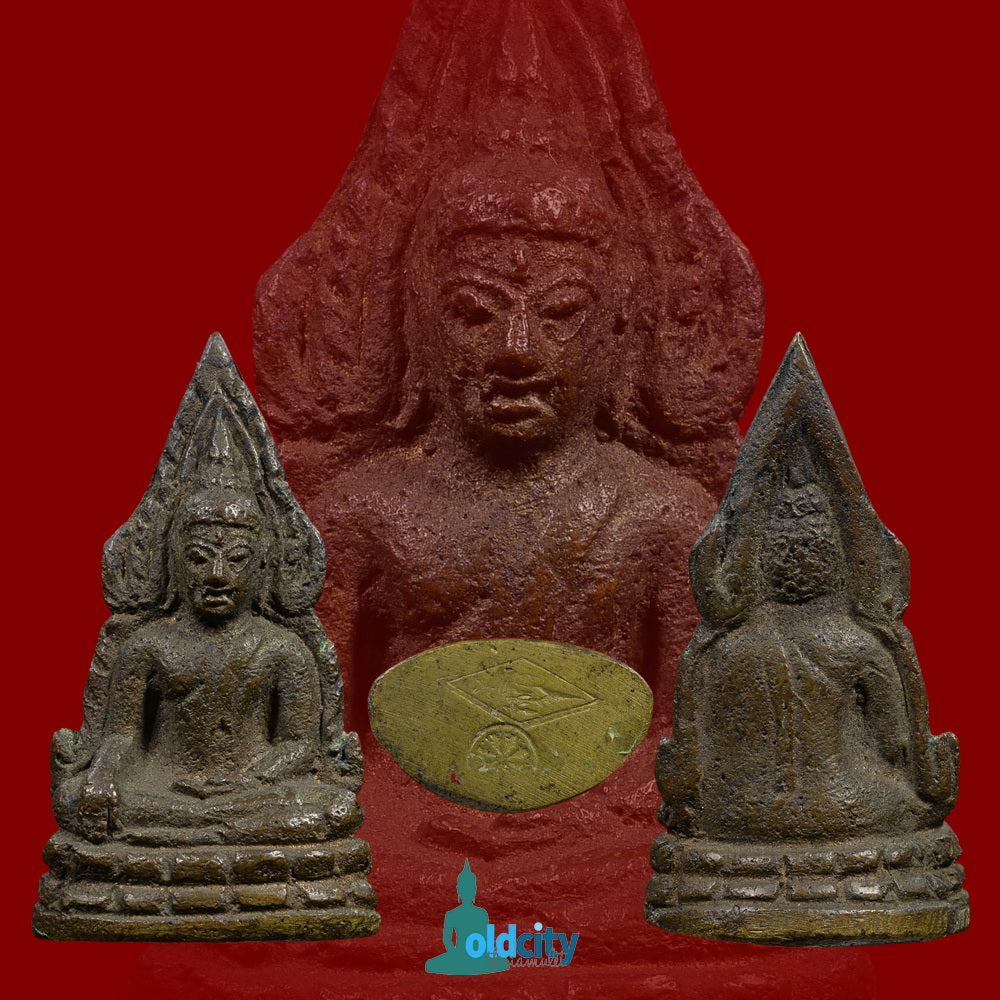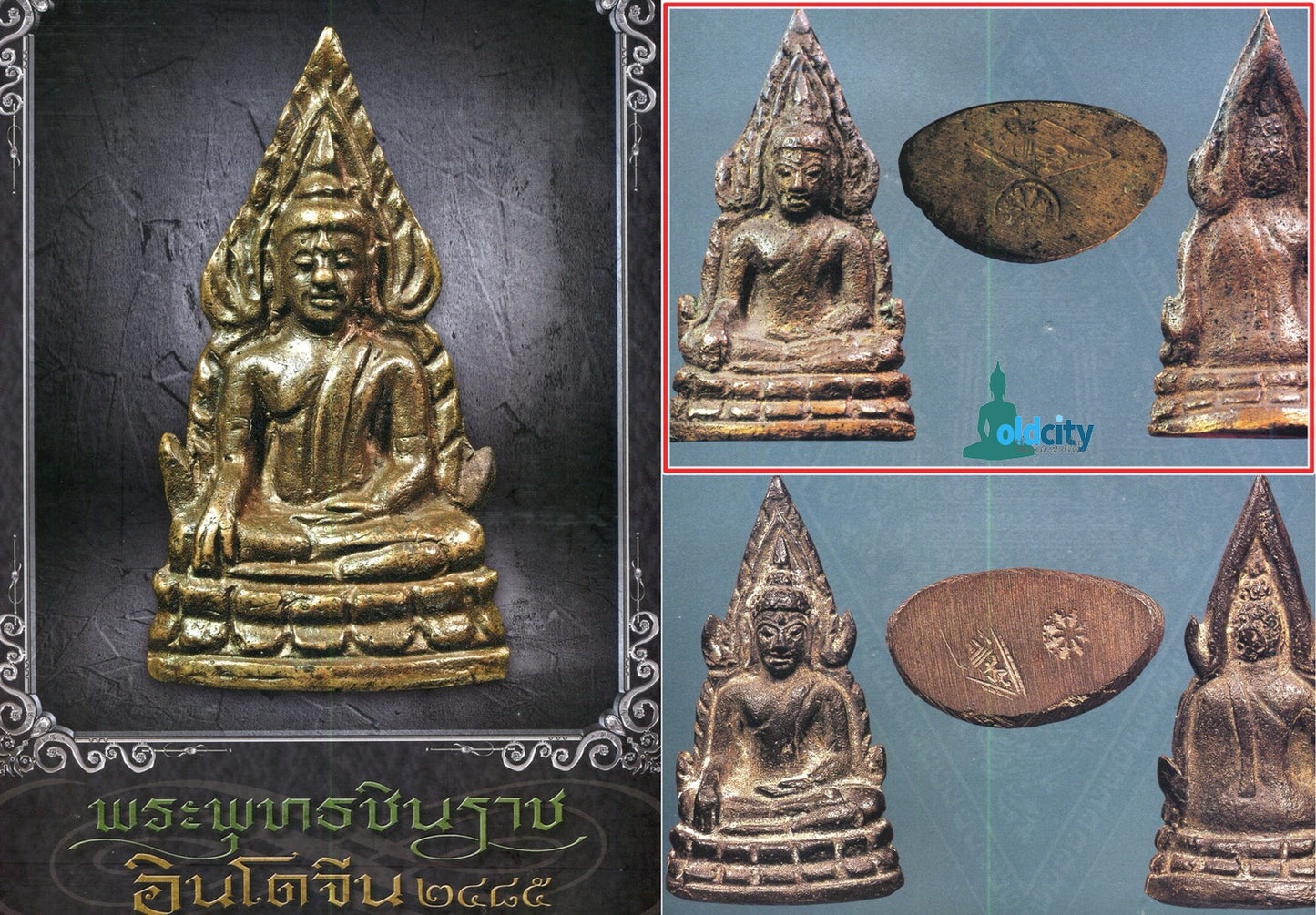OOBThaiAmulets
Phra Phuttha Chinnarat Indochine 2485
Phra Phuttha Chinnarat Indochine 2485
Couldn't load pickup availability
Collector Piece Featured Inside The Main Book Of Phra Phuttha Chinnarat Indochine
Phra Phuttha Chinnarat – Indochina Edition, Wat Suthat Thepwararam
The idea to create the Indochina Edition of Phra Phuttha Chinnarat arose during the border conflict with France over Indochina around 1940–1941 CE. The purpose was to distribute the amulets to soldiers going to war and to allow civilians to rent and worship them. By 1942, with World War II intensifying in the region, the amulets were formally created.
The consecration took place at Wat Suthat Thepwararam inside the main ordination hall on Saturday, March 21, 1942 (a powerful “Saturday 5th Waxing Moon, 5th Month” day). The Department of Fine Arts handled the creation and design, with Somdet Phra Sangharaja (Paé, Tissadevo) presiding over the ceremony, and Chao Khun Satchayanmuni (Son) overseeing the process.
The casting followed the precise formula of Wat Suthat’s tradition for making Phra Kring Buddha images, including the use of sacred gold sheets contributed by many revered monks. The ceremony was one of the most significant of the Rattanakosin era, involving 108 famous monks from across Thailand.
The Chinnarat Indochina cast images (2485 BE) were marked with codes (“khod”). Some pieces received an additional Dharma Wheel code (double-stamped, or “3 codes”), usually reserved for committee members, close disciples of Somdet Paé, or those assisting in the event. A small number of amulets were left unstamped because the code die broke, though many of these were later inscribed with yantras by monks present at the consecration.
Casting Characteristics
The casting work was divided among different artisan groups:
-
Ban Chang Lor community (traditional Thai craftsmen) → produced finely detailed images with neat features.
-
Sao Chingcha area workshops (Chinese artisans) → produced images with rougher surfaces, often called “gourd-skin” (phiw mara).
The amulets appear in multiple variations, with 4 main types and more than 70 sub-types, including long-robe and short-robe styles. Identifying and classifying them requires significant study and experience.
Casting Process (Summary)
-
Mould Preparation – sculpting the clay core, covering with wax, inserting channels, layering soft and hard clay, binding with wire, and preparing the mould opening.
-
Casting (Te Thong, “pouring metal”) – firing the mould, melting the metal, constructing the casting scaffold, and finally pouring the molten alloy into the prepared moulds.
Because of its powerful ritual, sacred materials, and historic context, the Phra Phuttha Chinnarat Indochina Edition of 1942 is regarded as one of the most important consecrations of the Rattanakosin period. It remains highly respected and collectible, both for spiritual protection and historical significance.


-
Free Shipping for Singapore| $15 Worldwide | $60 USA For Items Below $350

